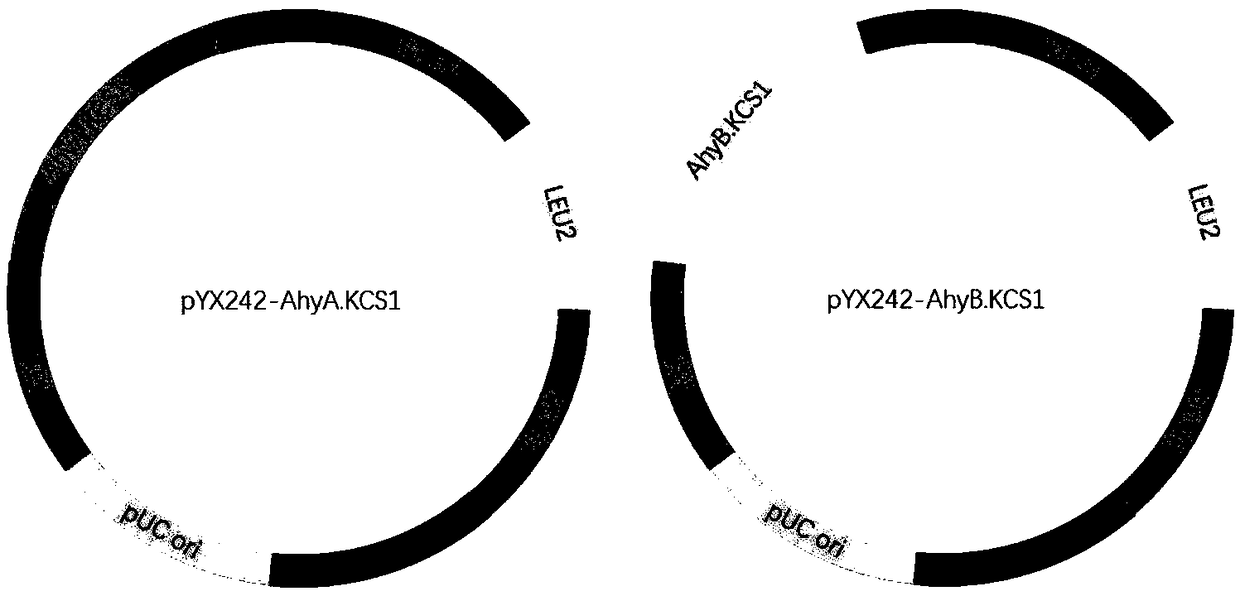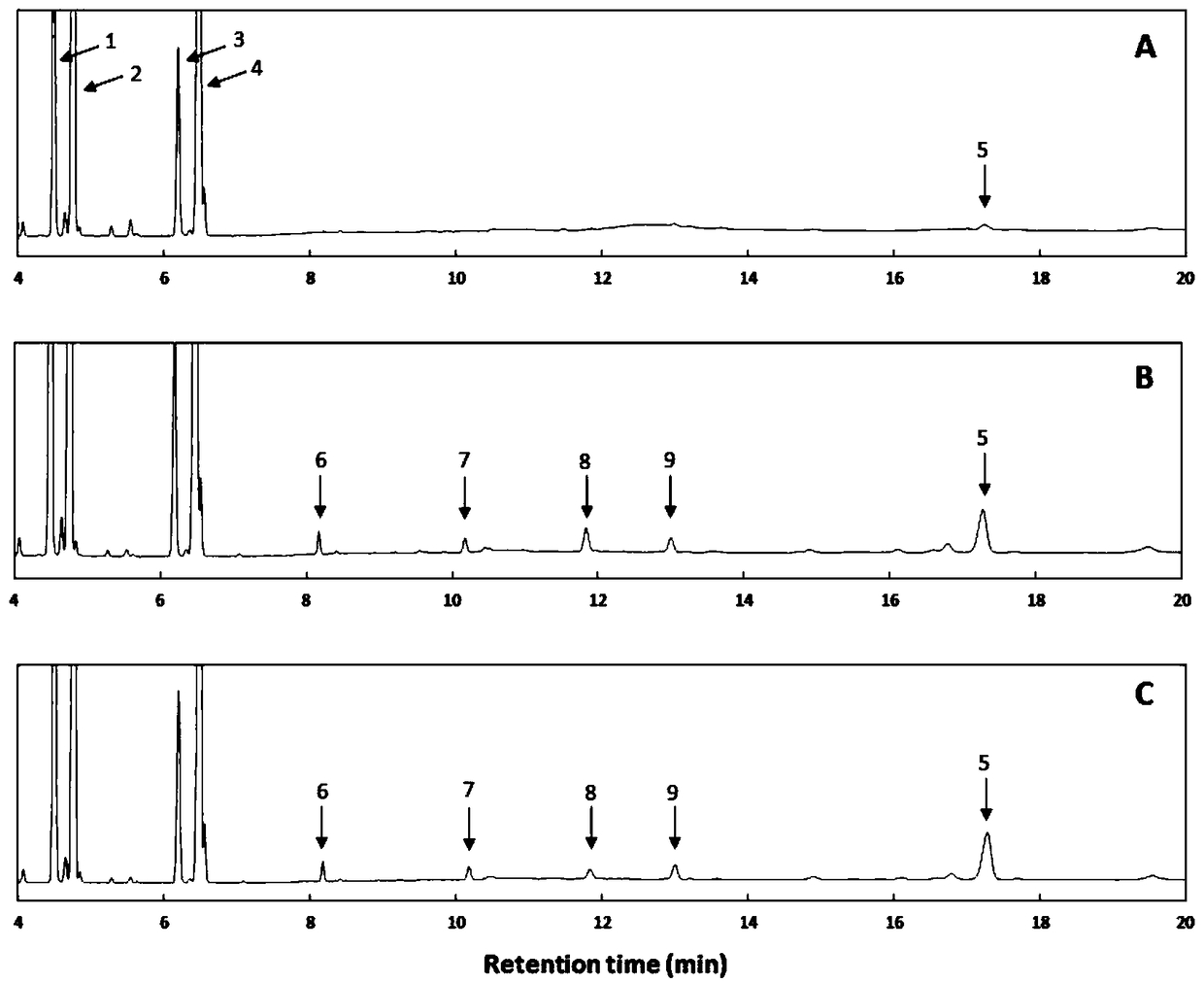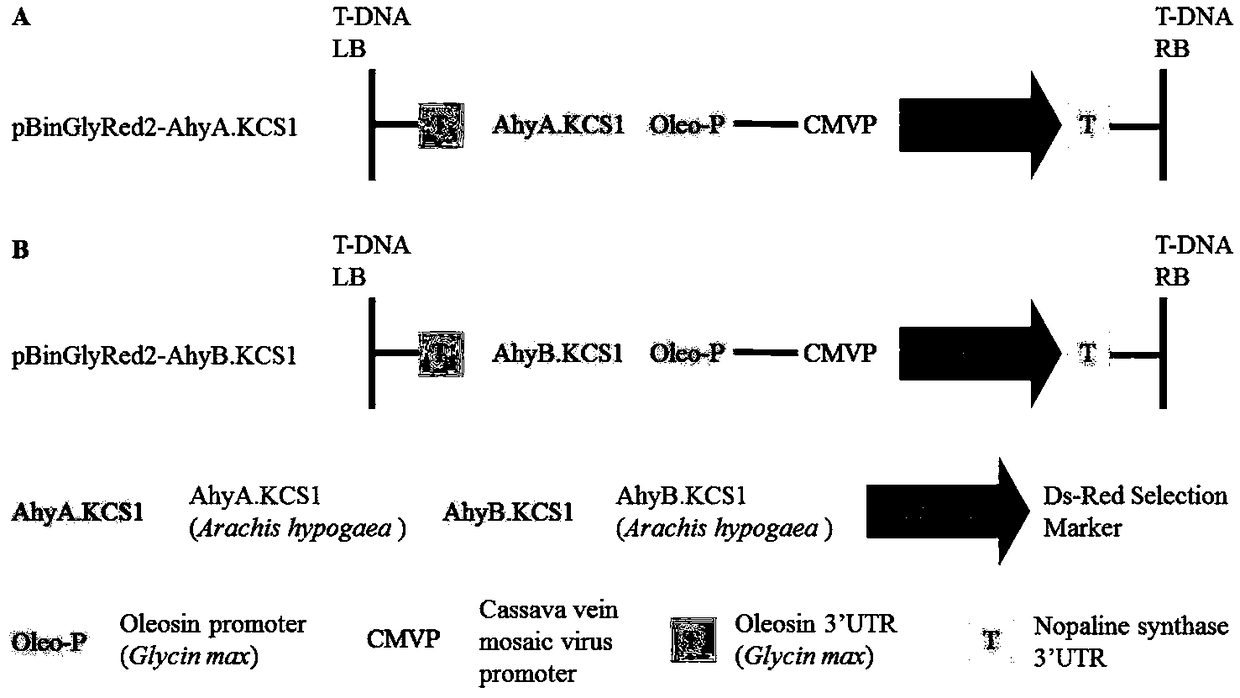Application of polypeptide in improvement of content of very long chain fatty acids in plants
A fatty acid, ultra-long technology, applied in the field of genetic engineering, to achieve the effect of increasing yield
- Summary
- Abstract
- Description
- Claims
- Application Information
AI Technical Summary
Problems solved by technology
Method used
Image
Examples
Embodiment 1
[0049] Example 1 Preparation method of peanut fatty acid carbon chain elongation enzyme gene AhyA.KCS1 and AhyB.KCS1
[0050] The developing pods of the peanut variety "Zhonghua 16" were collected, and the developing seeds were taken out and quickly frozen with liquid nitrogen. According to the instructions of the RNA extraction kit (Quanshijin Company, Beijing), the total RNA of peanut developing seeds was extracted. cDNA was obtained according to the operating instructions of the reverse transcription kit (Quanshijin Company, Beijing). Primers were designed according to the gene sequences of Aradu.J6P55 and Araip.S3IU8 in the ancestral diploid wild species Arachis duranensis (AA) and Arachis ipaensis (BB) in the peanut genome database PeanutBase (https: / / peanutbase.org / ). Using the upstream primer 5'-ATGGCTGATGCAAAAGCA-3'(SEQ ID NO:5) and the downstream primer 5'-TCAGATGGCAGATACCCTTGGA-3'(SEQ ID NO:6), using the cDNA of the developing seed as a template, a fragment of about...
Embodiment 2
[0051] Example 2 Structural Analysis of AhyA.KCS1 and AhyB.KCS1 Genes
[0052] Because the cultivar peanut (Arachis hypogaea L.) is allotetraploid (AABB), the AhyA.KCS1 and AhyB.KCS1 genes are the corresponding copies of its A and B genomes, respectively. The DNA coding regions of the AhyA.KCS1 and AhyB.KCS1 genes are both 1533bp, encoding 510 amino acids, and their DNA sequence and amino acid sequence homology all reach more than 99%. Both AhyA.KCS1 and AhyB.KCS1 genes have FAE1_CUT1_RppA and ACP_syn_III_C domains, which are necessary for KCS enzyme function.
Embodiment 3
[0053] Example 3 Production of ultra-long chain saturated fatty acids in yeast cells
[0054] Production of ultra-long chain saturated fatty acids in yeast cells using AhyA.KCS1 or AhyB.KCS1 genes. The AhyA.KCS1 and AhyB.KCS1 genes were respectively linked into the yeast expression vector pYX242, and the pYX242-AhyA.KCS1 and pYX242-AhyB.KCS1 yeast expression vectors were constructed. Such as figure 1 Vector schematic diagram of pYX242-AhyA.KCS1 and pYX242-AhyB.KCS1, TPI is triose phosphate isomerase promoter, Ter is terminator, flori is phage replication origin, LEU2 is LEU2 gene, 2μori is yeast replication origin, Ampicillin is the ampicillin resistance gene, and pUC ori is the replication origin of Escherichia coli.
[0055] pYX242, pYX242-AhyA.KCS1 and pYX242-AhyB.KCS1 were respectively transformed into yeast cells Inv Sci1 (Invitrogen, USA) using a yeast transformation kit (Invitrogen, USA). The transformed yeast was cultured on a medium lacking leucine, and a positive ...
PUM
 Login to View More
Login to View More Abstract
Description
Claims
Application Information
 Login to View More
Login to View More - R&D
- Intellectual Property
- Life Sciences
- Materials
- Tech Scout
- Unparalleled Data Quality
- Higher Quality Content
- 60% Fewer Hallucinations
Browse by: Latest US Patents, China's latest patents, Technical Efficacy Thesaurus, Application Domain, Technology Topic, Popular Technical Reports.
© 2025 PatSnap. All rights reserved.Legal|Privacy policy|Modern Slavery Act Transparency Statement|Sitemap|About US| Contact US: help@patsnap.com



